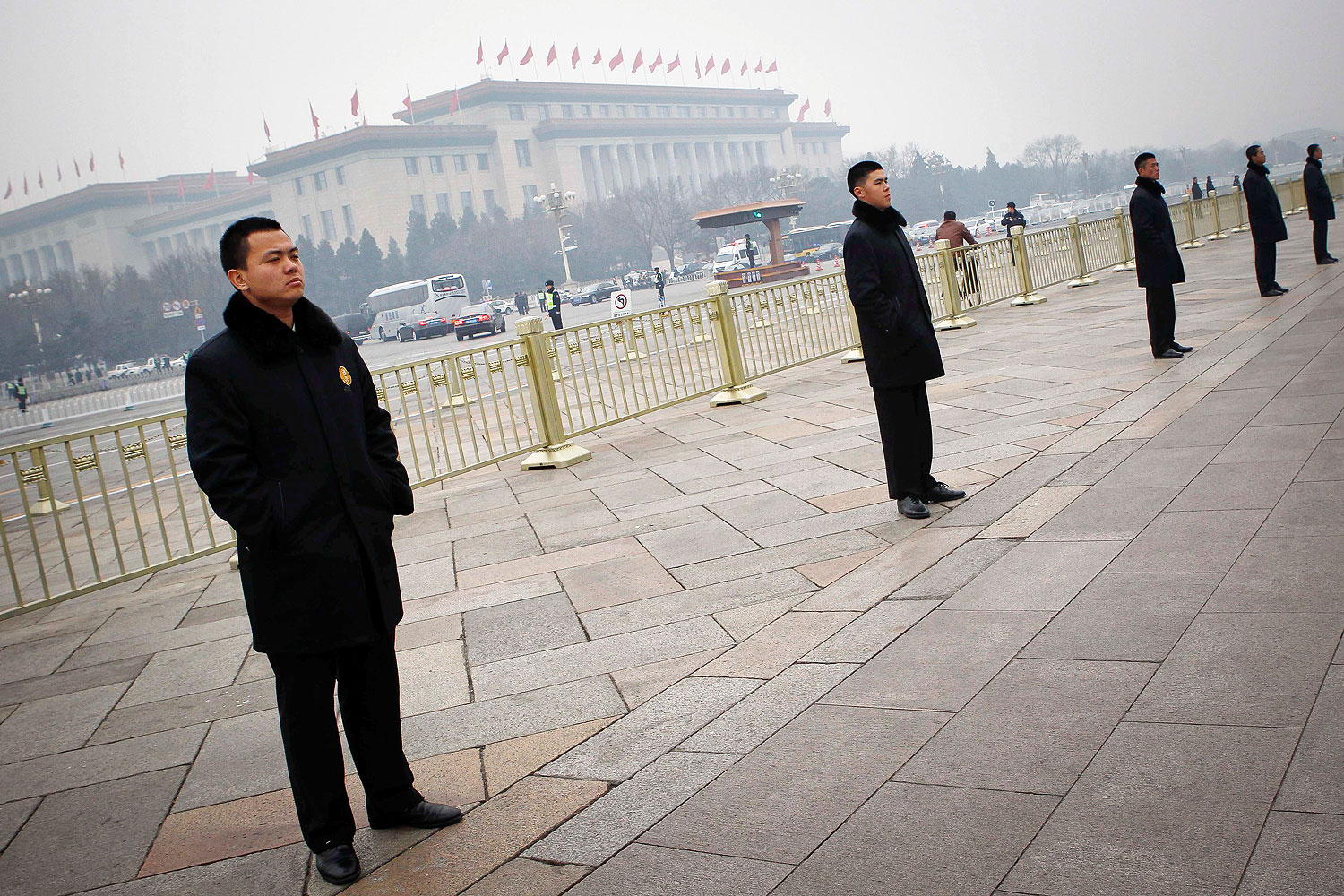
Every March, China’s top rulers gather at Beijing’s Great Hall of the People for meetings known as the National People’s Congress (NPC) and the Chinese People’s Political Consultative Conference (CPPCC). They are tightly choreographed affairs: delegates arrive in their finest regional costumery, listen to speeches and wield their rubber stamps in unison.
But the world outside has a way of creeping in. This year’s conclave opened days after a brutal attack at a railway station in Kunming, the capital of Yunnan province, that left 29 dead and more than 100 injured. Chinese officials said the attackers were Uighur terrorists from Xinjiang, an autonomous region in the country’s far west. This morning, about the same time as Premier Li Keqiang read a state-of-the-nation report to delegates, there were unconfirmed reports of some sort of disturbance just outside. It involved smoke, and possibly fire, and took place near the northern end of Tiananmen Square, at the entrance to the Forbidden City.
At this point, little is known about what did or did not happen, but some believe that it was an attempted self-immolation. The South China Morning Post quoted several unnamed witnesses who said they saw a commotion. One said they saw smoke, another saw a woman who was still “alive as they took her away.” By 12:45, when I walked through the square, there were no visible traces of a fire, let alone of somebody who tried to burn themselves. But given the number of police officers, public-safety volunteers and plainclothes officers on the scene, it is possible that evidence was simply swept away.
On any given day, the square is among the most tightly patrolled places on earth. There are video cameras everywhere. Uniformed police officers stand at the ready, and not-so-plainclothes officers make their patrols (the headsets are a give away). Red fire extinguishers dot the landscape, ready to be deployed should anybody try to set themselves on fire. Today, with the NPC and CPPCC under way, and the Kunming attack on everyone’s mind, the security presence felt even stronger, with heavily guarded checkpoints set up around the square’s vast perimeter. At many such stations, shields and black batons lay at the ready.
In October, during the Chinese Communist Party’s third plenum, a car plowed through a crowd of tourists near Tiananmen Gate, killing five and injuring dozens more. Photographs and video of black smoke rising against the square’s iconic portrait of Chairman Mao were quickly scrubbed from the web, as were eyewitness accounts. “Downplay the story; do not speculate on it; do not exaggerate it; do not put the story on the front page or website homepage,” China’s censors told journalists, according to a translation by China Digital Times.
China’s information lock-down makes it tough to know what is real and what is rumor. A photograph posted on Weibo today showing smoke rising in the square was quickly censored. And so it was with news of the Kunming attack. State media announced that arrests were made, but few outlets have published many details about the alleged perpetrators.
In an editorial for the Global Times, Jin Canrong, associate dean of the School of International Studies at Renmin University, argued that this was not the time to talk about terrorism. “This terror has just happened, and now is not the right time to dig into its causes,” he wrote. Nor, apparently, is it the time to post photographs from Tiananmen.
More Must-Reads from TIME
- How Donald Trump Won
- The Best Inventions of 2024
- Why Sleep Is the Key to Living Longer
- How to Break 8 Toxic Communication Habits
- Nicola Coughlan Bet on Herself—And Won
- What It’s Like to Have Long COVID As a Kid
- 22 Essential Works of Indigenous Cinema
- Meet TIME's Newest Class of Next Generation Leaders
Write to Emily Rauhala at emily_rauhala@timeasia.com